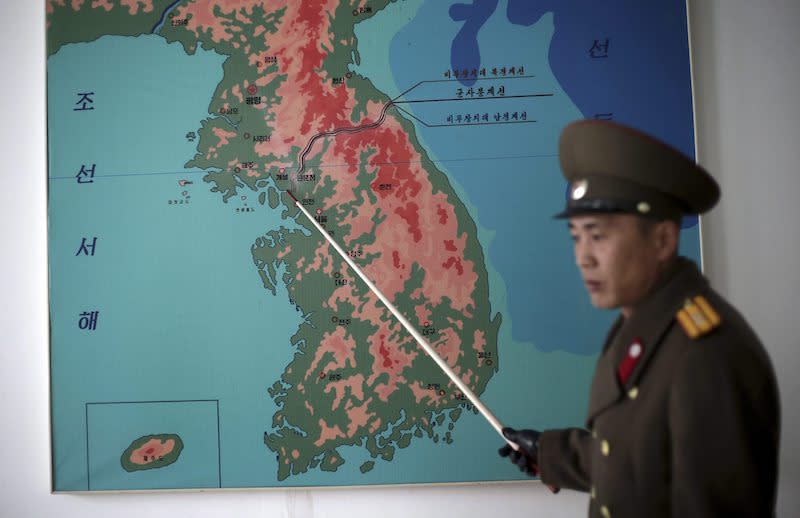Experiment finds most Americans surveyed can't locate North Korea on a map

Where in the world is North Korea?
It’s a simple question that’s proven to be surprisingly difficult for many Americans to wrap their heads around. At least that’s according to a new experiment led by Kyle Dropp of Morning Consult from April 27 to 29, which was published Monday by The New York Times. The survey asked a total of 1,746 U.S. adults to locate the country on an unlabelled map of Asia, and the majority of people missed the mark.
In total, only 36 per cent of those surveyed were able to correctly identify North Korea by identifying it on the map, the newspaper reported.
The New York Times asked 1,746 American adults to point out North Korea on a map. Here are the results… ????????♂️ pic.twitter.com/VtWZbovJVU
— Kabir Taneja (@KabirTaneja) May 15, 2017
A visual representation of the survey carried out by the Morning Consul sheds some light on the guesses. It shows each respondent’s selection for where North Korea is located includes guesses ranging everywhere from Australia to several countries in the Middle East, plus many other locations that were nowhere close to the Korean peninsula.
Other findings from the geographical survey revealed the majority of those who could correctly identify North Korea tended to favour diplomatic strategies over aggressive military-based intervention with the country, The New York Times reported. Furthermore, another key discrepancy was that on average, Republican men were more likely to know where North Korea was located over their Democrat counterparts, according to the newspaper.
These findings are especially troubling considering North Korea has long been antagonistic towards the U.S. when it comes to foreign policy. On Sunday, the embattled nation once again drew international ire by conducting yet another missile test in the Sea of Japan.
Also: Americans who can find North Korea on a map tend to view diplomatic & nonmilitary strategies more favorably than those who cannot. pic.twitter.com/HwpjEoJSxo
— Andrew Stroehlein (@astroehlein) May 15, 2017
The more geographically clueless you are, the more you apparently favor attacking North Korea https://t.co/5mnCfQR9KD
— West Wing Reports (@WestWingReport) May 15, 2017
it's like any actual knowledge about something leads to empathy. https://t.co/OvZFYtWfjT
— steveolson (@steveolson) May 15, 2017
"Republican men in particular – were more likely to correctly locate North Korea than Democratic men." https://t.co/zSfuU1tYN1
— Max Blumenthal (@MaxBlumenthal) May 15, 2017
News of survey’s findings was also met with a swift response over the Twitter, with many left totally flabbergasted over the U.S. public’s apparent lack of knowledge when it comes to basic geography.
Only 53 percent (!!!) of people with a postgraduate degree who took this quiz could find North Korea on a map. That is BONKERS. https://t.co/j0rNjgsHdz
— Emma Krupp (@EmmaKrupp1) May 15, 2017
Shout-out to the five 'muricans who figured it was somewhere in Australia. Hope your fingers aren't on the button… https://t.co/pVXLYrpsN9
— Matt Smith ????️ (@nightlightguy) May 15, 2017
1. Looking at this map of where Americans think North Korea is you have to ask: do we need a new superpower? pic.twitter.com/qeP6GtYotq
— Jeet Heer (@HeerJeet) May 15, 2017
Only Americans could confuse North Korea with Russia and Iran on a map… but still want to bomb all of themhttps://t.co/Z7gwrGOW6W
— Ben Norton (@BenjaminNorton) May 15, 2017
According to many online, it appears there’s definitely some room for improvement in the geography departments of U.S. schools.


